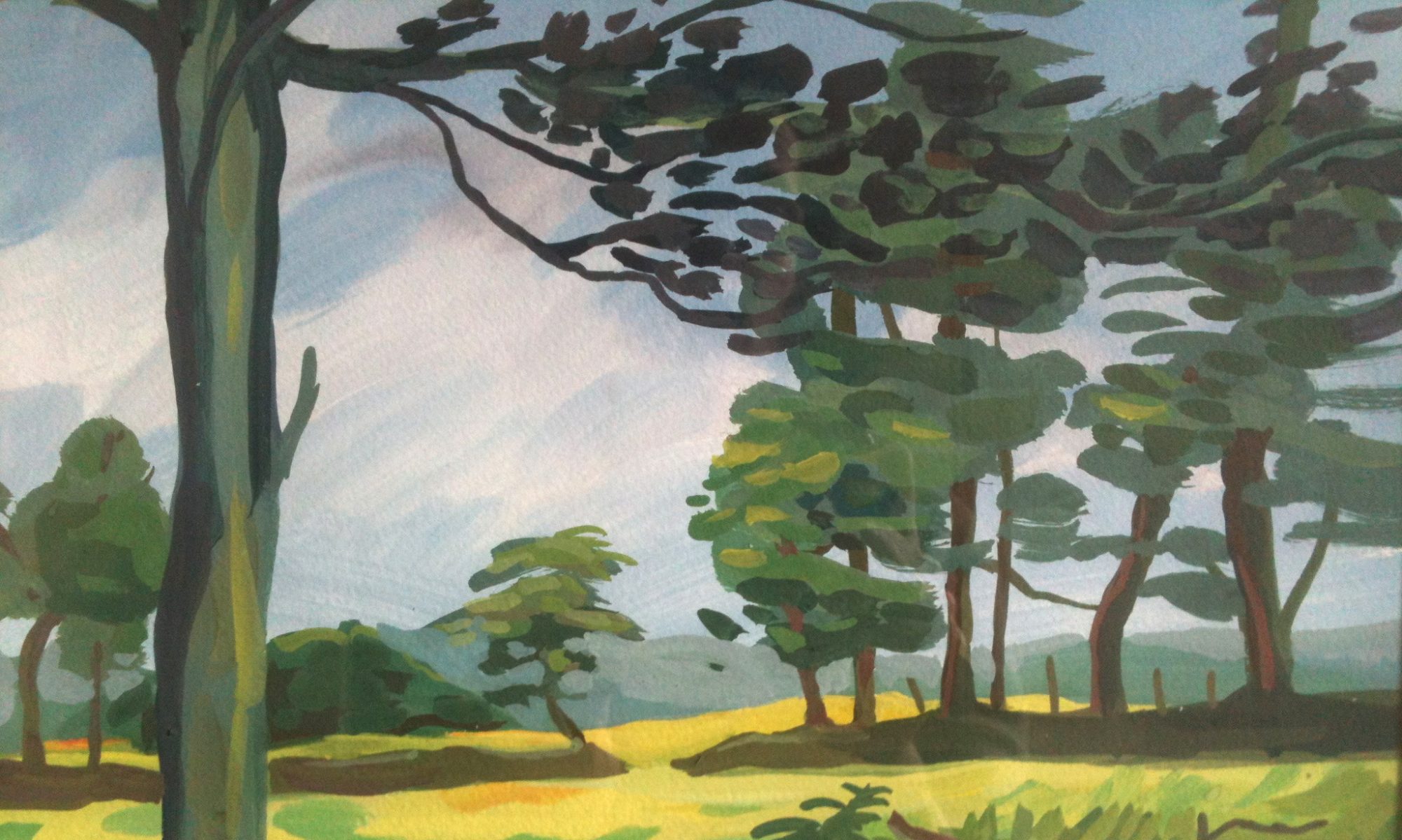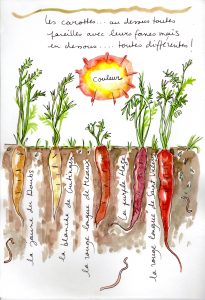Carrots make you look and feel good, so why not start the year with them? By the way, do you know where they come from? The carrot, like many of our vegetables, comes from the East, its ancestors having been found in Eurasia, and more precisely in Afghanistan. Not very fleshy like its cousin, the parsnip, still very popular in Great Britain, the carrot came in all colors: from purple to pink, from yellow to orange or even white. But it wasn’t until the end of the 18th century, when white carrots were crossbred with red ones, that they strangely became orange instead of pink.
But how can you tell by its foliage what color it is under the soil ? There’s only one solution: pull out the root to identify it ! The carrot is in fact a taproot, because its root is unique, straight and tapered. If we didn’t harvest it in its first year, we’d see it blossom into magnificent white umbels, followed by seeds like any biennial plant. You would see it growing wild on our embankments, not to be confused with the poisonous hemlock.
But how can you tell from its outer foliage what color it is underground? There’s only one solution: pull out the root to identify it ! The carrot is in fact a taproot, because its root is unique, straight and tapered. If we didn’t harvest it in its first year, we’d see it blossom into magnificent white umbels, followed by seeds. Just as you’d see it growing wild on our embankments, not to be confused with the hemlock with its sinister reputation. This is characteristic of biennial plants.
Some “early” carrots can be grown in spring, while others wait until summer, and can be stored in the sand all winter. While you don’t need to be a gourmet cook to enjoy them, growing them does require some serious know-how. Only an experienced gardener will succeed in getting seedlings to germinate on the first try. Extremely delicate, these tiny seeds take at least three weeks to germinate and hate small stones, heavy or soggy soil, shade and, above all, weeds, which always grow faster than the seeds and therefore take up the space. It is therefore advisable to weed and thin them twice, and – to top it all off – to cover them with a floating blanket. To ensure good growth, this will let rainwater through, but not its formidable enemy: the “carrot fly”. Fortunately, the carrot has a good friend : the leek, whose scent keeps the pest away, while the scent of the carrot keeps the “leek fly” away. These two vegetables should be inseparable in the vegetable garden, and not just in the stewpot.
And since carrots are rich in beta carotene, they make you look good, so let’s wish you a new year full of color and good cheer.

